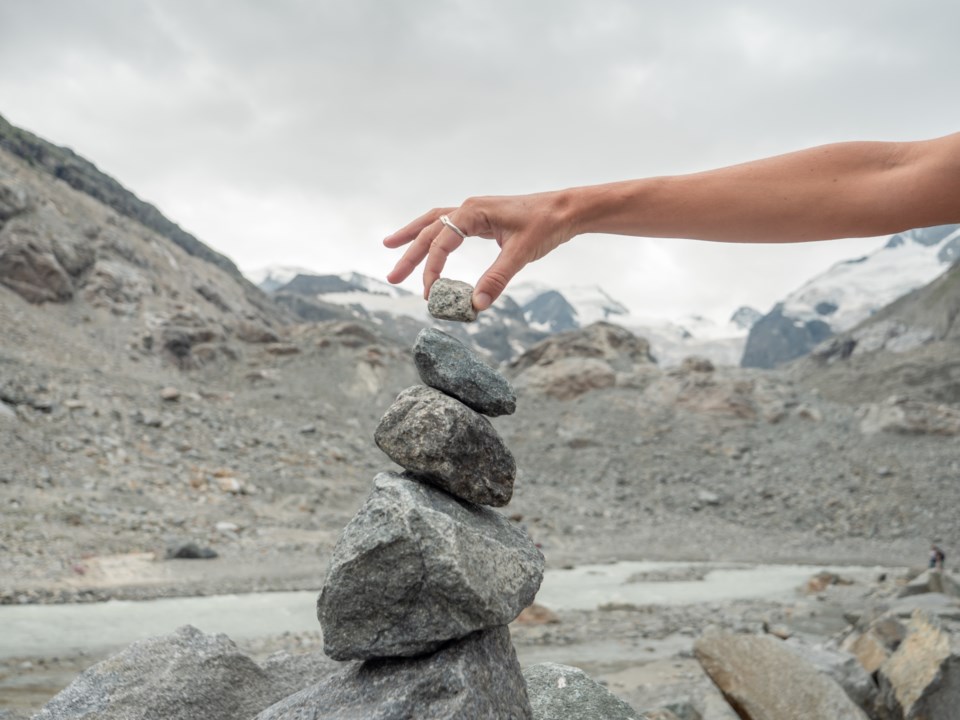The oddly resurgent problem of people trashing the environment has been the subject of much consternation and talk since the pandemic—almost like we’ve gone back to the dirty ’60s. Suffice to say to reverse the trend we must collectively—citizens, business, government—find a way to instil more respect for nature at a grassroots level, inculcating this into our own actions such that visitors to green spaces and wilderness areas are imbued with the same sense of reverence we hopefully hold for these surroundings.
But here’s the thing about the bottom-up approach: we can pick up garbage and dog poop, uproot invasive species, report illegal camping, scold folks who carelessly toss cigarette butts and warn them about fire danger, but if we leave other visual signposts of disrespect, entitlement, and unconscious behaviour, no matter how innocent-seeming, we’ll get nowhere. An example that has reached a nadir of foolishness was exposed the second the snow melted off Whistler’s trails: the stacking/balancing of rocks in natural areas.
It’s only May and already driving me crazy.
I’ve written about this before, but the behaviour has expanded to, well, everywhere. From Newfoundland’s Great Northern Peninsula to Toronto’s urban parks, from B.C. roadsides and beaches to the top of Whistler Mountain, people appear to be falling over themselves to “outstack” each other in a dubious competition that is: a) negatively impactful to ecosystems; b) aesthetically disturbing; and c) a danger when it involves precipices. What is the point of dozens of rock stacks spread along a trail or across a hillside?
While the jury is out on whether an environ that people easily find their way to can be considered any form of natural, what you see in terms of infrastructure, trails or human traffic is merely superficial. As with much of nature, the ground beneath our feet is a world unto itself—a microcosm of wilderness, home and habitat to countless wildlife from lichens to bacteria, pioneering plants, insects (including pollinating butterflies and bees), spiders, small mammals, reptiles, amphibians and birds. Whether on cobble beach or mountaintop, all can be linked in a fragile web-of-life centred on rocks.
There’s a reason for the expression “tread lightly.” Never mind the actual needs of organisms that are truly saxicolous (the biological word for rock-dependent), it serves nothing in either the tourism or nature equations to have people swarming such habitats and piling up rocks for the hell of it. Not only does this violate the experience of nature for others (and, occasionally, present a liability), but acts as a semaphore for utter environmental disregard at a time when we should desperately be flagging out messages to the contrary.
Though most of Whistler’s lowland trails suffer this affliction (Lost Lake’s network may be the worst), sparser rocky environments like talus or high alpine offer a good example of the potential damage wrought by such frivolity. Soil development is a painstakingly slow process requiring thousands of years. The breakdown products of physical and chemical weathering, along with microbial and lichen activity, create the beginnings of soil between, under, and around rocks. Moving even the smallest stone exposes this nascent soil, allowing it to wash away, foiling native plants and mosses that might colonize such environments. And every rock disturbed is also the loss of a potential home for numerous small organisms whose habitat we’ve already run a trail through
Even the worldwide community of “stone balance artists” (an interesting rabbit hole to dive down) eschew such behaviour, building their balances, taking photos, then dismantling, striving to avoid disturbing natural and protected areas. Unfortunately, stacking then unstacking already violates the Leave No Trace ethos universal to camping and backcountry travel. Leave No Trace isn’t just about trash. It means leave no sign you travelled through, i.e., zero impact. Stacking rocks alters nature for the next visitor, leaves a reminder you were there, and encourages others to do the same.
Is there ever justification for rock cairns? Of course: navigation and safety, as per human tradition; carefully marking trails with minimal disruption to the natural environment, which can avoid the need in some wild areas for unnatural and expensive signage. In any other context, stacking rocks is simply another arrogant “I was here” statement equivalent to tagging a tree or a rock with spray-paint—something few rock-stackers would even condone (while missing the connection). During the COVID lockdown, people found several annoying new equivalents—painting rocks (with toxic paints) to leave along woodland trails, and stapling pictures to trees for the supposed enjoyment of passersby. While we can all empathize with the intended spirit-lifting, we’re-all-in-this-together message during cooped-up paranoiac times, such flagrant environmental alteration is paradoxically inconsiderate of others, turning what, for some, would be a meditative commune with nature into another depressing gallery of unconscious human behaviour.
But back to rock-stacking. Given this meme has spread globally and deeply into both front- and backcountry tourist culture (thank you, Instagram), what to do?
There’s only one solution: in cases of true peril or impact in natural areas, forbid it as many European and U.S. National Parks currently do; shut it down wherever and whenever possible through outreach and legislation. At the personal level, educate, discourage and, of course… unstack those rocks.
Leslie Anthony is a biologist, writer and author of several popular books on environmental science.




